
A brief introduction to Information Literacy that includes research and source types.Videos are close-captioned.
- Subject:
- Information Science
- Material Type:
- Module
- Author:
- Kelly Griffiths
- Date Added:
- 06/03/2019

A brief introduction to Information Literacy that includes research and source types.Videos are close-captioned.

This text was developed to prepare students for college level reading and writing courses. Chapters focus on academic reading and writing strategies, readings, and exercises.

With our tutorial, we want to send everyone into the interview room (or potentially virtual interview room) prepared and confident. You know you have skills and talents to offer to the employer, you know you are the best fit for the position, so now the preparation you complete for that interview will ensure the employer knows it too.We break down the four phases of an interview process: Preparation, What to Wear, How to Present Your Best Self, and How to Follow Up.

Textbook covering topics orienting undergraduate-level students to the major engineering disciplines (civil, computer and electronic, and mechanical) and professionalism within these disciplines.
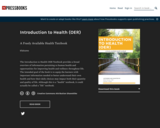
This Introduction to Health OER Textbook has been adapted from a Lumen Learning OER Health textbook. This book includes the following chapters: Intro to Health and Wellness, Exercise and Physical Activity, Nutrition, Weight Management, Stress Management, Emotional and Mental Health, Alcohol and Tobacco, Drugs and Addiction, Unintentional Injuries and Violence, Relationships Sexuality and Contraception, Immune System Infectious Diseases and other topics
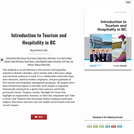
Short Description:
Note: The second edition of this book was published September 2020. You can find it here: Introduction to Tourism and Hospitality in BC - 2nd Edition. This textbook is an introduction to the tourism and hospitality industry in British Columbia, and is written with a first year college and university audience in mind. It is a collaborative work with input from educators, industry leaders, employers, and past graduates of BC’s tourism and hospitality management programs. All chapters have been reviewed by experts in the field. Each chapter is organized thematically moving from a global, then national, and finally provincial context. Chapters contain "Spotlight On" boxes that highlight an organization, business, or other key component and "Take a Closer Look" features that encourage further reading on particular subjects. Key terms, exercises and case studies can be found at the end of each chapter.
Long Description:
This textbook is an introduction to the tourism and hospitality industry in British Columbia, and is written with a first year college and university audience in mind. It is a collaborative work with input from educators, industry leaders, employers, and past graduates of BC’s tourism and hospitality management programs. All chapters have been reviewed by experts in the field.
Each chapter is organized thematically moving from a global, then national and finally provincial context. Some chapters are quite global in focus while others concentrate primarily on British Columbia. Chapter content is based on available data and research, and input from collaborators.
Each chapter features “Spotlight On” text boxes that highlight an organization, business, or other key component of the chapter’s theme. “Take a Closer Look” features encourage students to do further reading on particular subjects.
At the end of each chapter, key terms are presented in alphabetical order to help students gain confidence with terminology. These are followed by chapter exercises and a case study for in-depth exploration of the subject matter. Key terms are summarized in a Glossary at the end of the textbook.
Word Count: 114862
ISBN: 978-1-989623-69-5
(Note: This resource's metadata has been created automatically by reformatting and/or combining the information that the author initially provided as part of a bulk import process.)
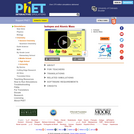
Are all atoms of an element the same? How can you tell one isotope from another? Use the sim to learn about isotopes and how abundance relates to the average atomic mass of an element.
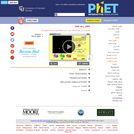
Are all atoms of an element the same? How can you tell one isotope from another? Use the sim to learn about isotopes and how abundance relates to the average atomic mass of an element.

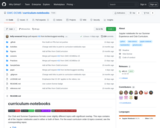
This curriculum was designed for high school students with no prior coding experience who are interested in learning Python programming for data science. However, this course material would be useful for anyone interested in teaching or learning basic programming for data analysis.
The curriculum features short lessons to deliver course material in “bite sized” chunks, followed by practices to solidify the learners' understanding. Pre-recorded videos of lessons enable effective virtual learning and flipped classroom approaches.
The learning objectives of this curriculum are:
1. Write code in Python with correct syntax and following best practices.
2. Implement fundamental programming concepts when presented with a programmatic problem set.
3. Apply data analysis to real world data to answer scientific questions.
4. Create informative summary statistics and data visualizations in Python.
5. These skills provide a solid foundation for basic data analysis in Python. Participation in our program exposes students to the many ways coding and data science can be impactful across many disciplines.
Our curriculum design consists of 27 lessons broken up into 5 modules that cover Jupyter notebook setup, Python coding fundamentals, use of essential data science packages including pandas and numpy, basic statistical analyses, and plotting using seaborn and matplotlib. Each lesson consists of a lesson notebook, used for teaching the concept via live coding, and a practice notebook containing similar exercises for the student to complete on their own following the lesson. Each lesson builds on those before it, beginning with relevant content reminders from the previous lessons and ending with a concise summary of the skills presented within.
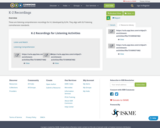
These are listening comprehension recordings for K-2 developed by ELPA. They align with ELP listening comrehension standards.

Download this PDF for an easy and shareable introduction to the Inclusive Social Sciences four-module mini-courses complete with links to all OER videos and presentation slides!

This Inclusive Social Sciences Lessons for Oregon K-5 Students Teacher’s Guide is designed to help educators prepare to teach newly developed K-5 lessons that are grounded in the belief that education can be a tool for transformation and liberationfor all learners.
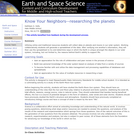
Utilizing online and traditional resources students will collect data on planets and moons in our solar system. Working collaboratively students will generate a spreadsheet of the data. After verifying one another's information, they will then use the spreadsheet to try and determine ways in which the Earth is unique amongst the objects in our solar system, including, but not limited to, the reasons behind Earth's ability to support life.
(Note: this resource was added to OER Commons as part of a batch upload of over 2,200 records. If you notice an issue with the quality of the metadata, please let us know by using the 'report' button and we will flag it for consideration.)

Este material va destinado para el suo de estudiante de EBR del nivel Primaria. Contiene: - Concepto - videos explicativos - Enlace de juego interactivo - Actividades para los estuantes
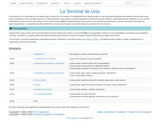
Software Carpentry lección para la terminal de Unix La terminal de Unix ha existido por más tiempo que la mayoría de sus usuarios. Ha sobrevivido tanto tiempo porque es una herramienta poderosa que permite a las personas hacer cosas complejas con sólo unas pocas teclas. Lo más importante es que ayuda a combinar programas existentes de nuevas maneras y automatizar tareas repetitivas, en vez de estar escribiendo las mismas cosas una y otra vez. El uso del terminal o shell es fundamental para usar muchas otras herramientas poderosas y recursos informáticos (incluidos los supercomputadores o “computación de alto rendimiento”). Esta lección te guiará en el camino hacia el uso eficaz de estos recursos.
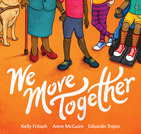
This learning guide offers educators context, vocabulary, discussion questions, learning activities, printable games and templates, and other resources to support conversations about disability, accessibility, social justice, and community building. We Move Together is a bold and colourful exploration of all the ways that people navigate through the spaces around them and a celebration of the relationships we build along the way. We Move Together follows a mixed-ability group of kids as they creatively negotiate everyday barriers and find joy and connection in disability culture and community.
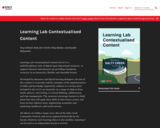
Short Description:
Learning Lab Contextualised Content (LLCC) is a multidisciplinary suite of digital open educational resources. It supports learners and educators by providing foundation resources in an interactive, flexible, and shareable format. Developed by educators and digital learning designers, the aim of this content is to provide realistic examples of the implementation of skills and knowledge required by students at a tertiary level. Included in the LLCC are materials on a range of subjects from maths, physics, and writing, to critical thinking, collaboration, and time management. The resources encourage learners to think about how they will apply these skills in their future careers and focus on four industry areas: engineering, economics and marketing, healthcare, and social services. All objects sit within a larger story, that of the Salty Creek Community Festival, and can be explored holistically by the learner. However, each learning object is also modular, meaning it can be used as an independent lesson or activity.
Word Count: 73696
(Note: This resource's metadata has been created automatically by reformatting and/or combining the information that the author initially provided as part of a bulk import process.)
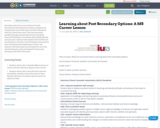
Secondary educators across Lebanon County, Pennsylvania developed lesson plans to integrate the Pennsylvania Career Education and Work Standards with the content they teach. This work was made possible through a partnership between the South Central PA Workforce Investment Board (SCPa Works) and Lancaster-Lebanon Intermediate Unit 13 (IU13) and was funded by a Teacher in the Workplace Grant Award from the Pennsylvania Department of Labor and Industry. This lesson plan was developed by one of the talented educators who participated in this project during the 2018-2019 school year.
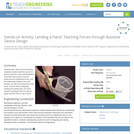
Students learn about how biomedical engineers create assistive devices for persons with fine motor skill disabilities. They learn about types of forces, balanced and unbalanced forces, and the relationship between form and function, as well as the structure of the hand. They do this by designing, building and testing their own hand "gripper" prototypes that are able to grasp and lift a 200 ml cup of sand.